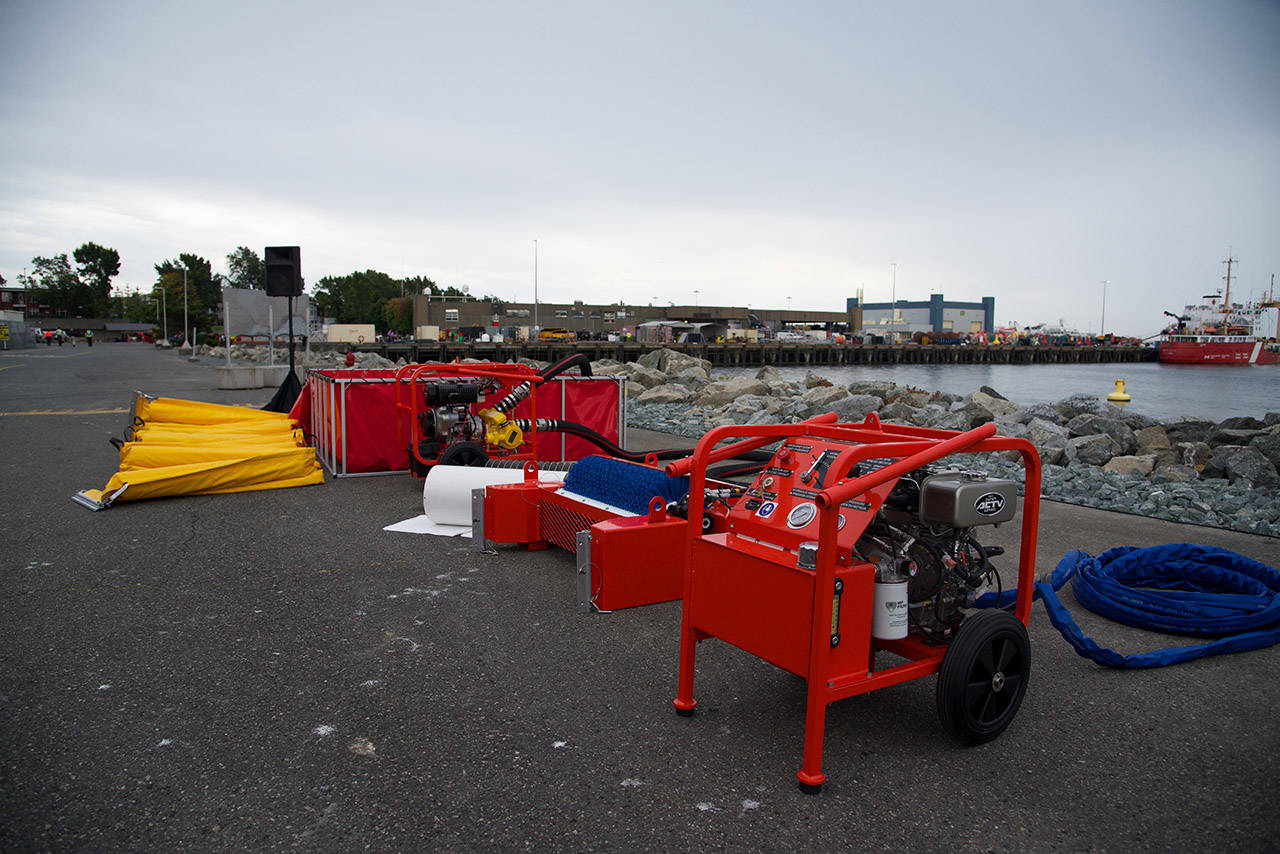The Pacific region of the Canadian Coast Guard is receiving over $1 million worth of marine environmental response equipment.
Jonathan Wilkinson, Minister of Fisheries, Oceans and the Canadian Coast Guard, announced in Victoria on Friday that Coast Guard bases in Victoria and Richmond have taken delivery of 22,000 feet of boom curtain and three medium-sized portable skimmers.
These additions are designed to clean oil spills and other pollutants from the water. The curtain boom will be used to keep the materials in a controlled area so the skimmers can remove it from the surface.
“This new equipment is part of the Environmental Response Equipment Modernization Initiative, which is bringing new infrastructure equipment and technologies to more than 80 Coast Guard locations across this county,” Wilkinson said. “By leveraging advanced technology, this investment puts the Canadian Coast Guard on the cutting edge of environmental response innovation.”
ALSO READ: Trans Mountain’s first oil spill response ship ready
He noted that this was the first of several rounds of equipment that will be brought to the Coast Guard, but he did not give further details.
When asked if the equipment was designated to clean up raw bitumen – in addition to refined oil spills – should the Trans Mountain Pipeline should be built, Wilkinson was adamant.
“It relates to all hydro-carbon products that may be spilled,” he said. “What science tells you is diluted bitumen behaves no differently in water than conventional crudes. The issue is not whether we can clean it up. For all conventional crudes it’s the speed at which you can actually address any kind of marine spill. So, this kind of equipment actually allows us to ensure that we’re getting to a spill, we’re putting it into a confined space and the skimmers are there to essentially clean it up.”
Many BC residents are concerned about an increased risk of tanker spills with the additional traffic that would result should the pipeline be built. Those worries have only been exacerbated by the widely reported decline in numbers of the southern residential killer whales, now listed at 75, including the ailing J50 orca.
READ MORE: Sick killer whale J50 diagnosed with parasitic worms
Wilkinson said DFO has been working hard to combat the whales’ three largest threats: water contaminants, availability of prey and noise or physical disturbances.
Moves include enacting a vessel slowdown policy to reduce noise on the water, moving transportation lanes away from foraging areas, and instituting a 200-metre buffer for whale watching and recreational boats.
The two largest contributors of contaminants, he said, were Victoria’s untreated wastewater and North Vancouver only utilizing primary treatment. He noted, however, that both communities are building new facilities. Lastly Wilkinson noted that to aid chinook populations, the DFO has closed three foraging areas to fishing and is looking to close two more.
“We will continue to move forward; we intend to continue to evolve the work that we’ve done,” he said. “We’re very open to implementing new measures if indeed we need to do that from a scientific perspective. And I think this government is very proud of the work that it’s done and it very much intends to recover the south resident killer whale.”
Like us on Facebook and follow us on Twitter
